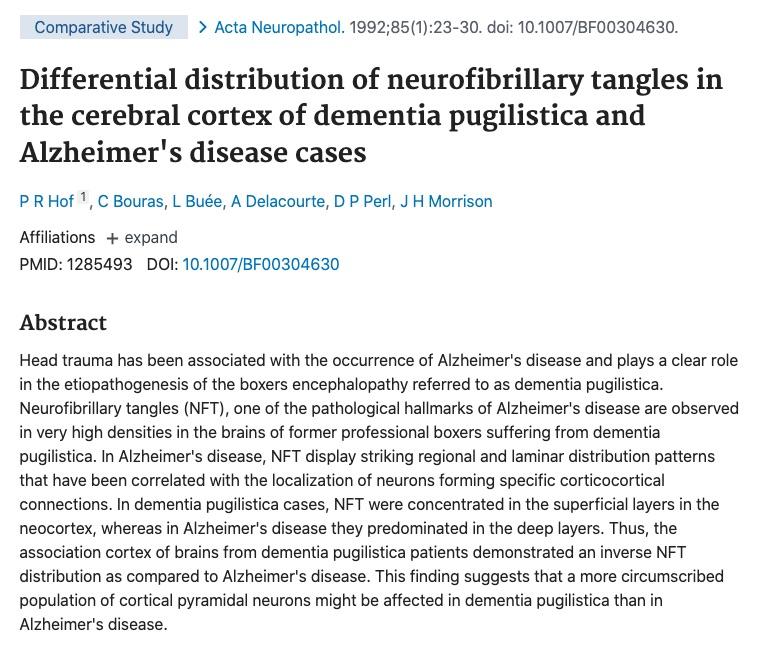Acta Neuropathol
. 1992;85(1):23-30. doi: 10.1007/BF00304630.
Differential distribution of neurofibrillary tangles in the cerebral cortex of dementia pugilistica and Alzheimer's disease cases
P R Hof 1, C Bouras, L Buée, A Delacourte, D P Perl, J H Morrison
Affiliations expand
PMID: 1285493
DOI: 10.1007/BF00304630
Abstract
Head trauma has been associated with the occurrence of Alzheimer's disease and plays a clear role in the etiopathogenesis of the boxers encephalopathy referred to as dementia pugilistica. Neurofibrillary tangles (NFT), one of the pathological hallmarks of Alzheimer's disease are observed in very high densities in the brains of former professional boxers suffering from dementia pugilistica. In Alzheimer's disease, NFT display striking regional and laminar distribution patterns that have been correlated with the localization of neurons forming specific corticocortical connections. In dementia pugilistica cases, NFT were concentrated in the superficial layers in the neocortex, whereas in Alzheimer's disease they predominated in the deep layers. Thus, the association cortex of brains from dementia pugilistica patients demonstrated an inverse NFT distribution as compared to Alzheimer's disease. This finding suggests that a more circumscribed population of cortical pyramidal neurons might be affected in dementia pugilistica than in Alzheimer's disease.
